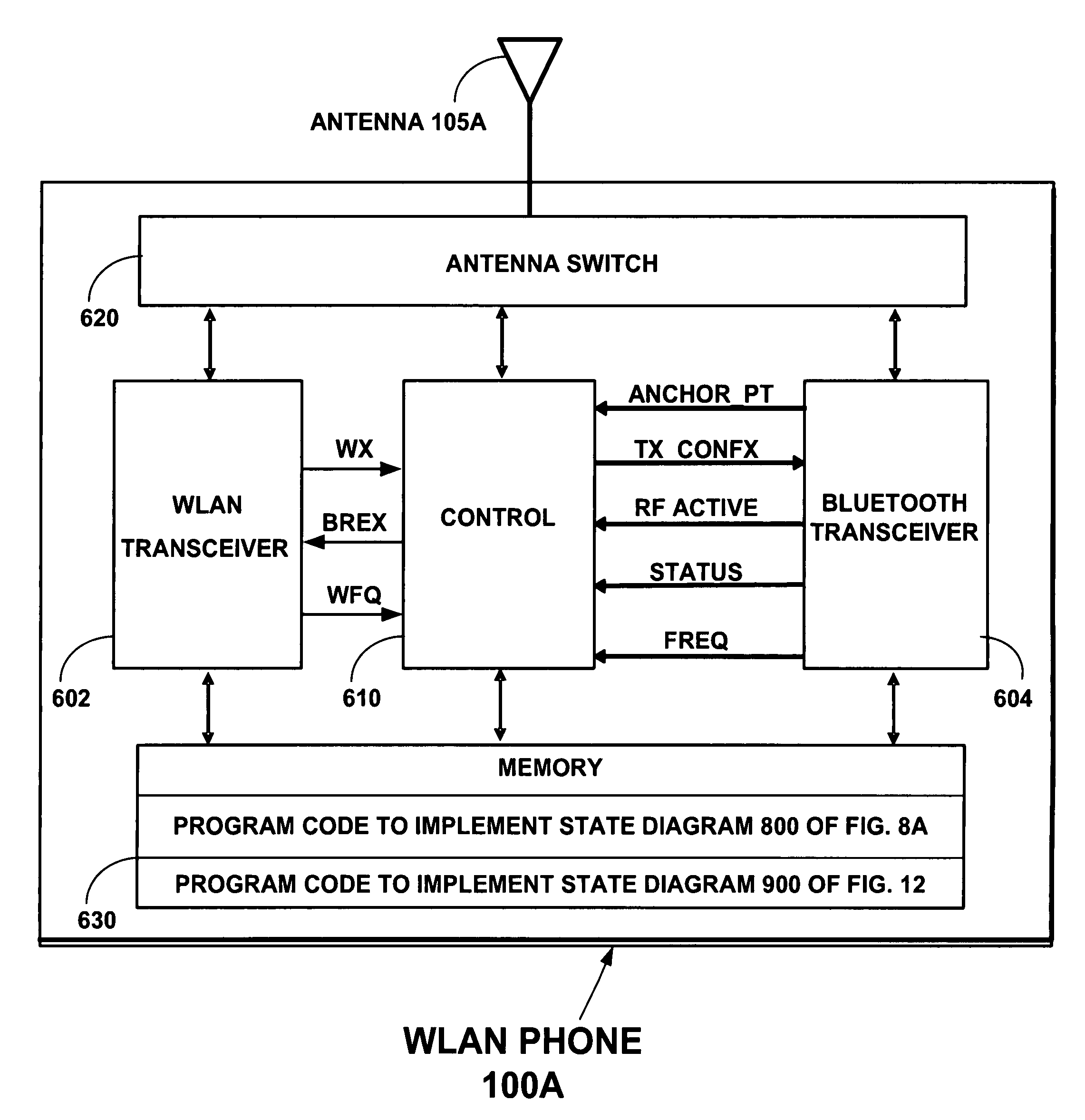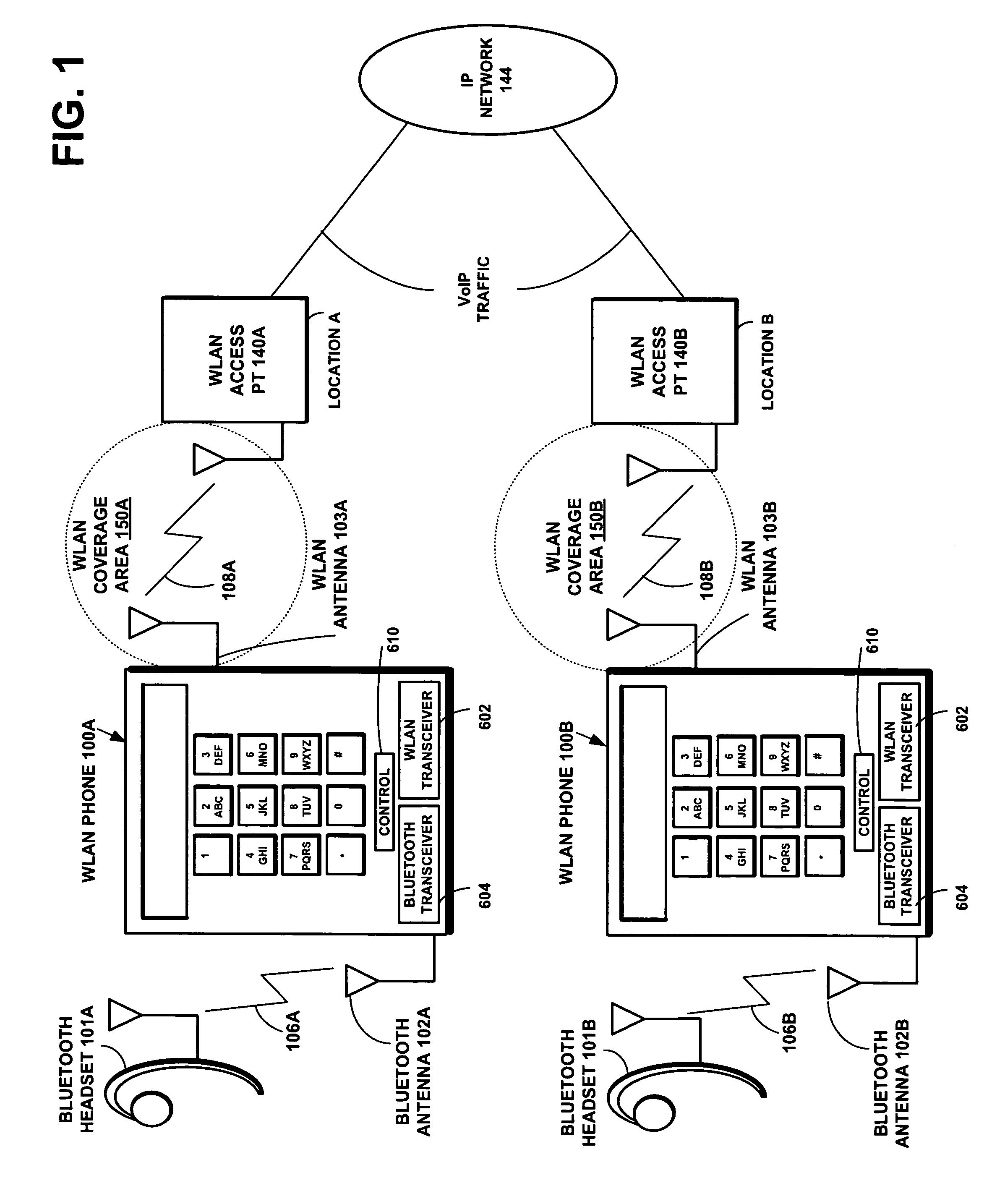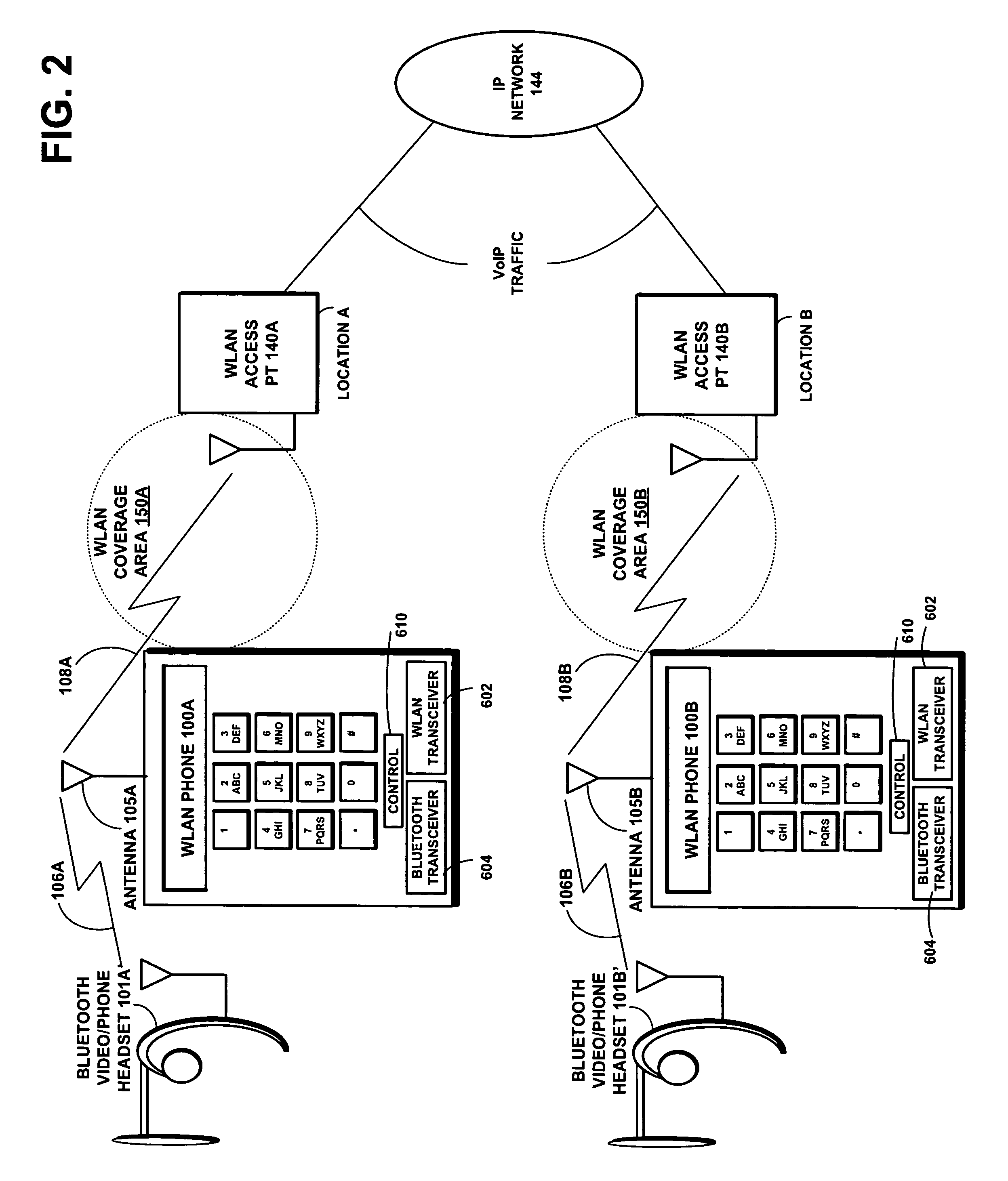Method and system for VoIP over WLAN to Bluetooth headset using ACL link and sniff for aligned eSCO transmission
a technology of wlan and bluetooth headset, applied in the field of methods and systems, can solve the problems of limited ability to affect downlink timing, interference with each other, and limited processing capacity of headsets, so as to reduce interference in simultaneous wlan
- Summary
- Abstract
- Description
- Claims
- Application Information
AI Technical Summary
Benefits of technology
Problems solved by technology
Method used
Image
Examples
Embodiment Construction
[0063]FIG. 1 is a network diagram according to an embodiment of the present invention showing a voice over IP (VoIP) communications network via a WLAN telephone 100A to a Bluetooth headset 101A. The telephone terminal 100A includes a Bluetooth transceiver 604 connected to a Bluetooth antenna 102A and a WLAN transceiver 602 connected to a separate WLAN antenna 103A. The Bluetooth transceiver 604 operates in the Bluetooth network 106A to communicate with the wireless headset 101A using the ISM band of 2.4 GHz and the Bluetooth v1.2 Specification communications protocol to exchange Bluetooth packets. When a Bluetooth link 106A is established between the telephone terminal 100A and the wireless headset 101A, packets are exchanged over the air between the terminal 100A and the wireless headset 101A by alternately transmitting and receiving the encoded audio data in consecutive Bluetooth slots. In stereo headsets 101A and 101B, for example, Bluetooth ACL packets can carry one audio channe...
PUM
 Login to View More
Login to View More Abstract
Description
Claims
Application Information
 Login to View More
Login to View More - R&D
- Intellectual Property
- Life Sciences
- Materials
- Tech Scout
- Unparalleled Data Quality
- Higher Quality Content
- 60% Fewer Hallucinations
Browse by: Latest US Patents, China's latest patents, Technical Efficacy Thesaurus, Application Domain, Technology Topic, Popular Technical Reports.
© 2025 PatSnap. All rights reserved.Legal|Privacy policy|Modern Slavery Act Transparency Statement|Sitemap|About US| Contact US: help@patsnap.com



